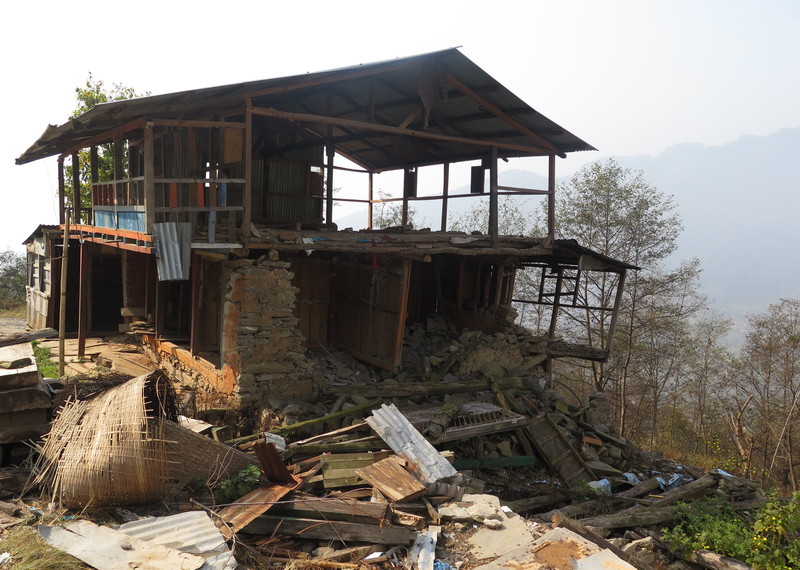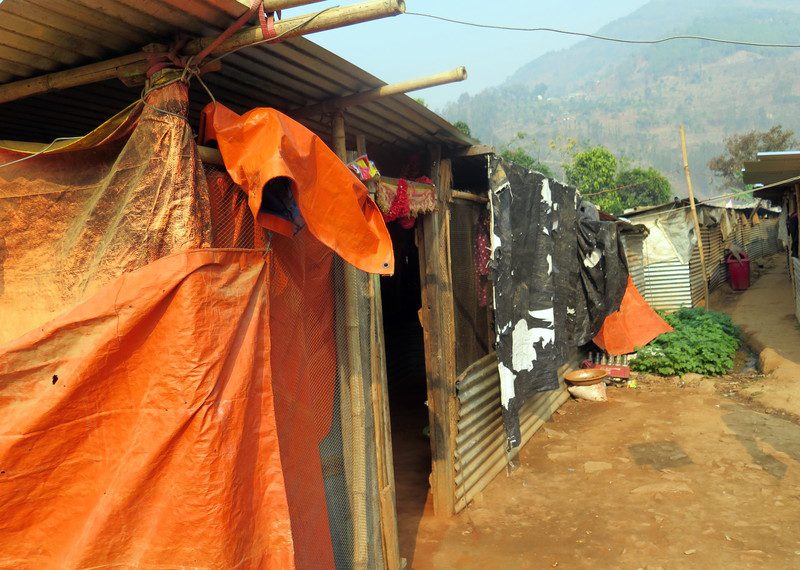One year since a devastating earthquake struck Nepal, the government has done nothing to help survivors, says Om Bahadur Silwal.
I am a farmer. I live in Lele, Lalitpur, in the central region of Nepal.
I was right outside my home when the earthquake hit. I was just about to wash my hands after eating at the edge of the field, when everyone shouted: “It has come!” I ran to a clearing outside and watched as – crash – my house fell.
At the time I thought, “My house has gone,” and I felt like I, too, had gone. I felt like my parents had died. But there was no point in crying.
That night I slept in the field. I put up a temporary cloth shelter. There were many of us all over the field. We cooked and ate there. It’s been this way for a year now. And rebuilding the house – the mud house I had painstakingly built – how can I make another house like that, now that I have no source of income? The government said it would give money, but the hope that this will come is dying.
No place to hide
The earthquake has changed my life. I used to do my own farming, and work for other people. Who will I work for now? Everyone is in the same situation. People say, “Come and work” and give whatever mid-day meal they can, but there is nothing to eat in the evening, there is no money to give. Where will they give from?

This is the problem for the village. Everything is a mess. There was hope that the government would build a little. Now all hope has died. The government keeps saying it will give, it will give, but who knows when? And now the monsoon season is here, and the temporary shelter we have will be blown away. See? The cloth shelters have already torn. And just like the 25 April earthquake, we will again have nothing.
After working all day, we need a place to rest. Even birds after flying all day go to rest, sheltering in a hole in a tree. We, too, are like that: we come after working all day, after earning a little money, and we also need a place to rest. But we don’t have shelter. All our stress is about housing.
No money
My wife has gone to live with my daughter in Nepal’s southern region, and I sleep inside the damaged house. My sons live separately from me, and in the evening my son and daughter-in-law bring me cooked food.
I have talked of building a house; but I don’t know where I’ll put the mud and stone from the old house. The money the government has said it will give hasn’t come. I don’t even have money for tea.
What shall I ask from the government? School buildings are still damaged, places of worship are still broken. An old saying goes: you shouldn’t tell the poor that you’ll give to them. But that’s how it is with the government.
There was a tremor recently. My elder brother and son said, “An earthquake has come, get out, get out.” I thought, “No, even if I live, what will I see now? What do I have to eat? There is only this pitiful mess to see.” I thought, “If I die, I will die,” and I didn’t leave the house.
One year since the April 2015 earthquake in Nepal, the majority of survivors are still living in temporary and make-shift housing. Their right to adequate housing has effectively been denied as a consequence of the slow pace of post-disaster reconstruction. The government’s proposed housing solutions are too expensive: the cost of building an earthquake resistant home far exceedsthe amount of money being distributed to survivors for reconstruction. Affordability is one of the key components of the right to adequate housing.
Please share Om Bahadur’s story to highlight the desperate reality of Nepali survivors one year on from the earthquake.



